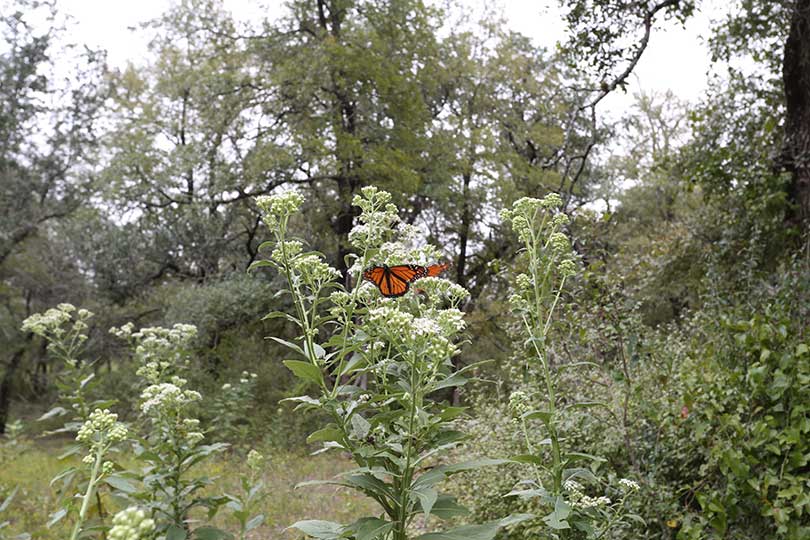Recent efforts to help preserve the dwindling Monarch butterfly population are being seen in the Concho Valley. Thousands of the butterflies are swarming trees in the region during their annual 2,000-mile fall migration from Canada to Mexico.
The Monarch has two special features that make them unique in the animal kingdom, according to Dr. Charles Allen, Texas A&M AgriLife Extension Service entomologist.
The milkweed the Monarch feeds on as a caterpillar helps serve as its defense as it continues through its growth cycle. Allen says the chemicals from the milkweed remain in its body through its entire growth cycle. These chemicals cause predators that try to eat it to become sick, but not die.
“So they quickly figure out that this brightly colored insect that’s floating peacefully through the air is not food, and they don’t eat them,” Allen told AgriLife Today.
This also causes any type of predator to avoid eating anything “that even looks like a Monarch,” Allen said. This has also caused a number of insects to evolve to look like a Monarch to avoid becoming prey and to remain protected.
The Monarch also has a very unique migration pattern—a 2,000-mile journey from Canada to Mexico. This route roughly parallels I-35 through Central Texas, according to Allen.
The development cycle of a Monarch is also unique. They lay eggs on milkweed. The adults die, and the eggs hatch. The larvae feed on the milkweed and become butterflies.
As they migrate from Mexico each spring, this cycle occurs three more times as they head through the U.S. to Canada.
The Monarch also has a very strong sense of direction. They are able to locate their way back to Mexico with precise accuracy every time.
Experiments have put this accuracy to the test. The butterfly has still ended up in Mexico on the roughly 10-acre plot, despite experiments that have taken tagged butterflies 1,000 miles off course.
“No other insect or animal does that,” Allen said. “Four generations out and they still know their way back to their historic overwintering grounds, a place this generation has never seen before. It’s an amazing story.”
When the Monarchs arrive at the small plot in Mexico, they cover the very-large trunks of old forest trees at their overwintering site, Allen said.
“Those large trunks or boles are heat sinks,” Allen said. “And when the occasional cold snap moves through the area, heat radiating from those large trunks enable the butterflies to survive.”
Illegal logging activities in Mexico have contributed to the decline of the Monarch. Satellite imagery or photos taken from planes determine the number of Monarchs in Mexico, by their distinctive bright orange colors.
Their numbers have dropped, but are beginning to see a slight rebound.
“Fortunately, during the last two years we have seen their numbers recover somewhat, but they are still less than 50 percent of what they were before,” Allen said.
He said efforts to preserve the population seem to be proving successful by the large migration numbers.
“They’re migrating in huge numbers, and I’m going to be really surprised if the acreage in Mexico that’s colored orange does not show an increase now and hopefully for years to come for the regal and very special Monarch butterfly,” Allen said.

